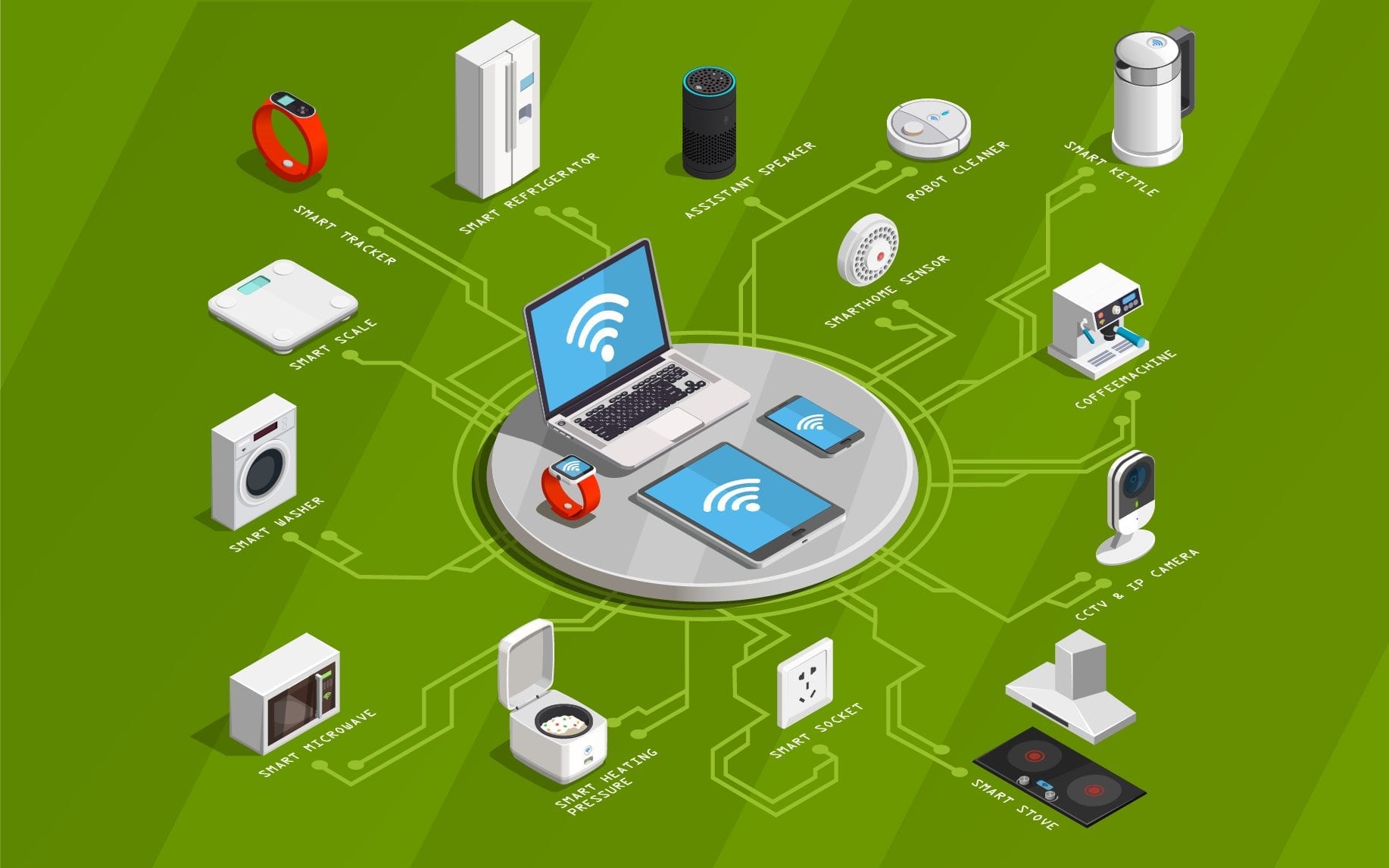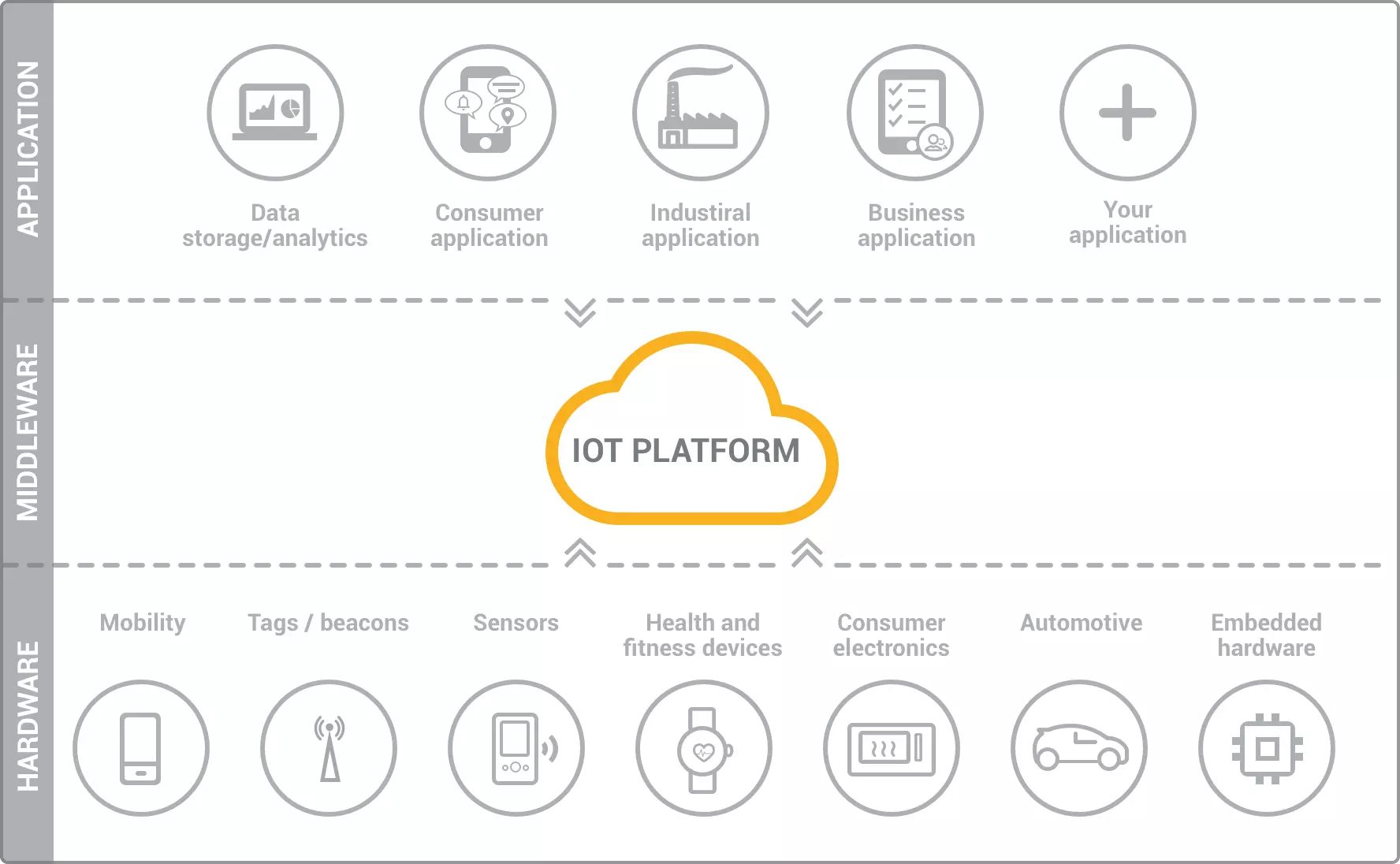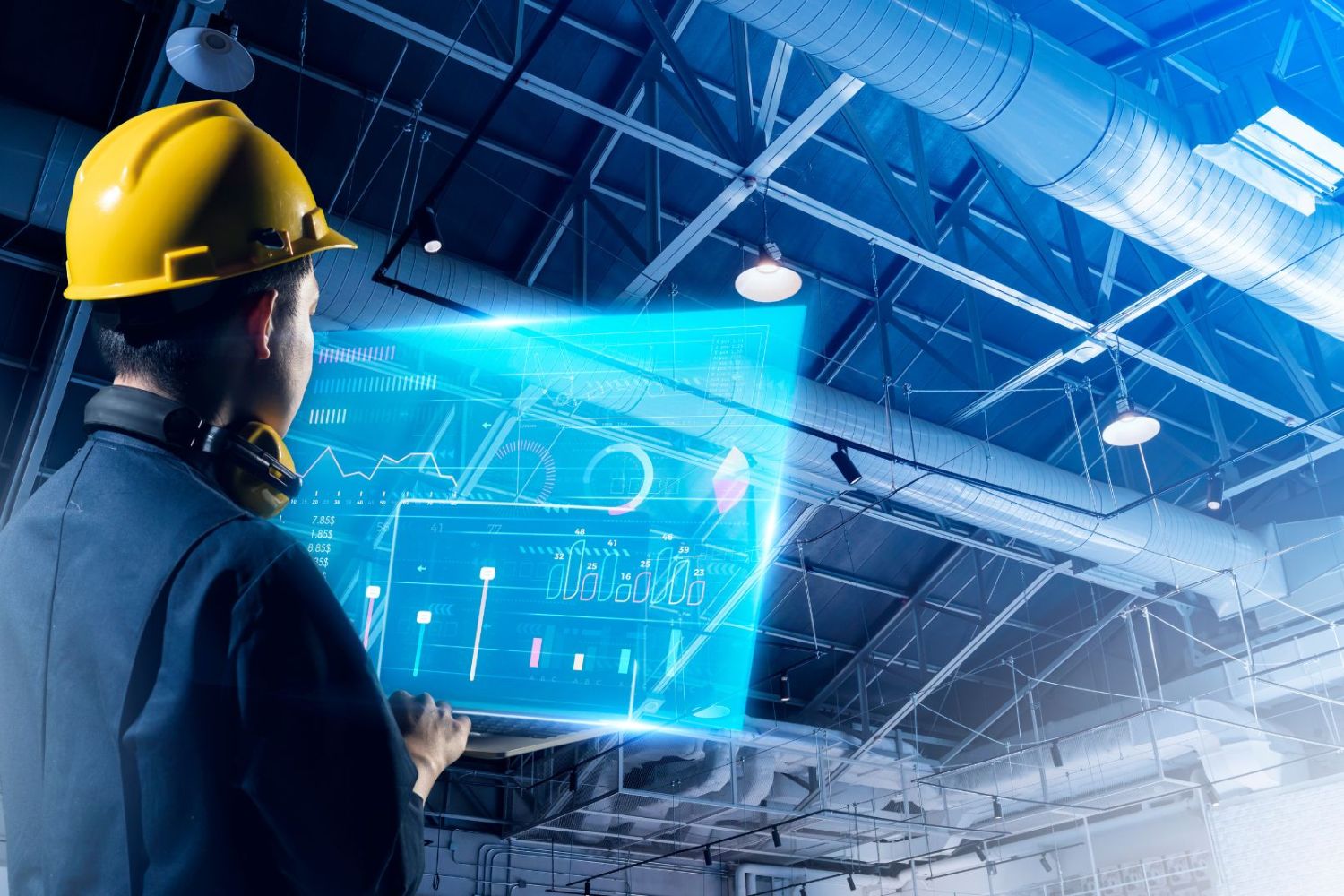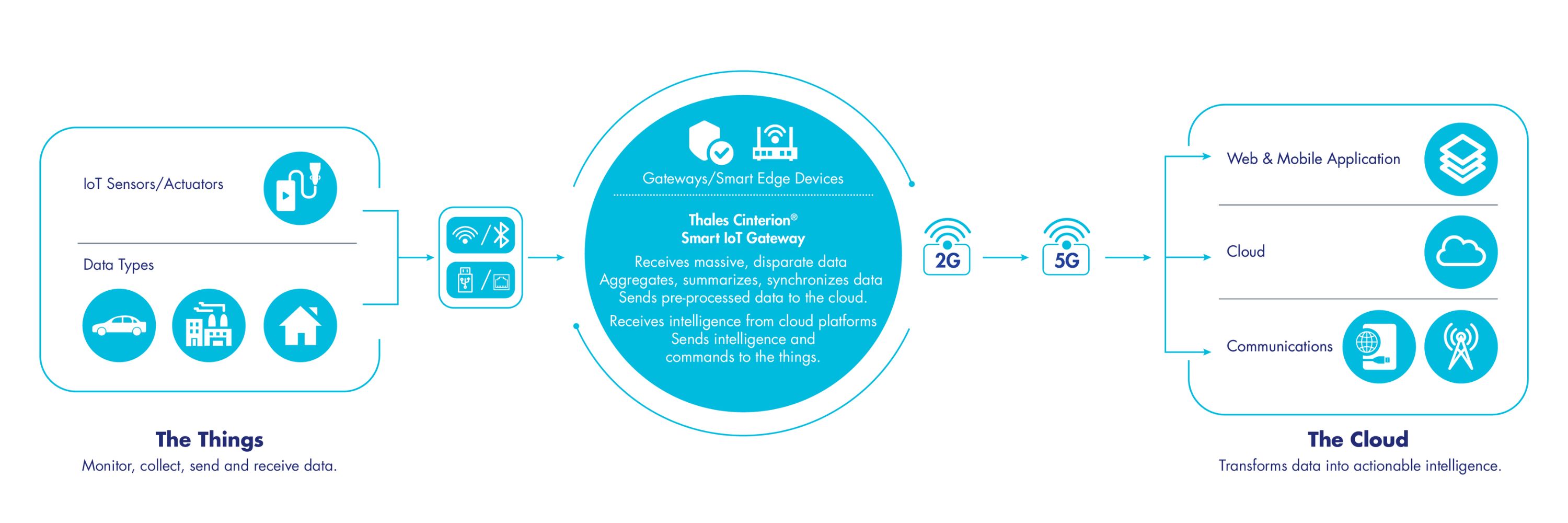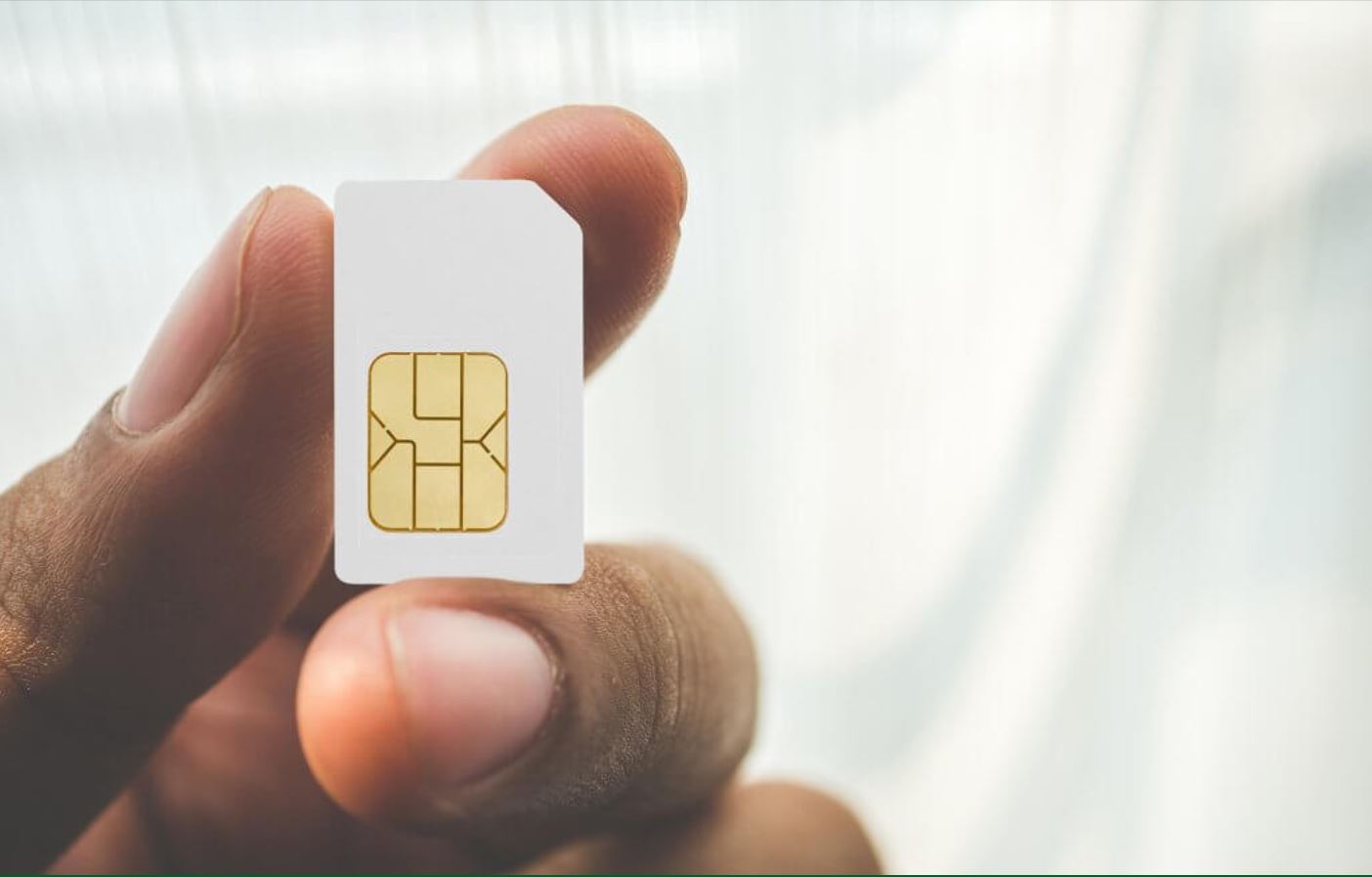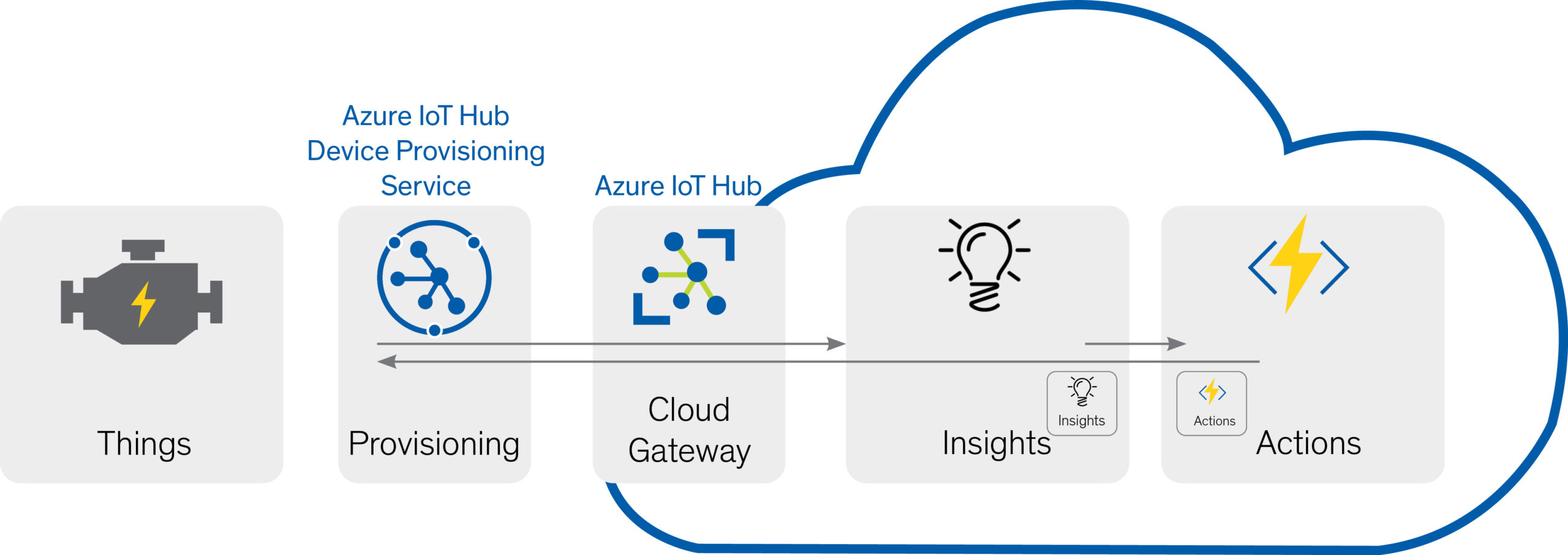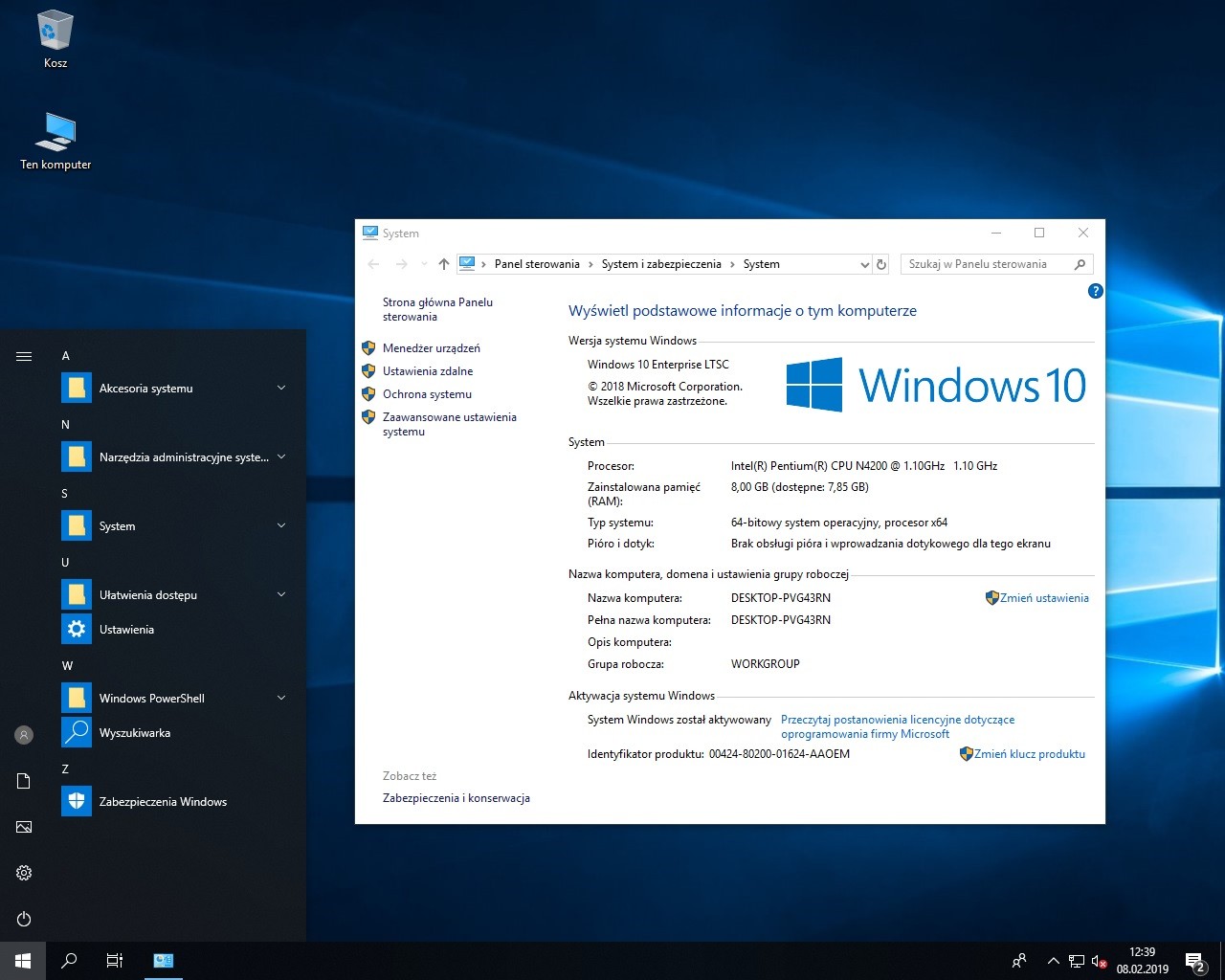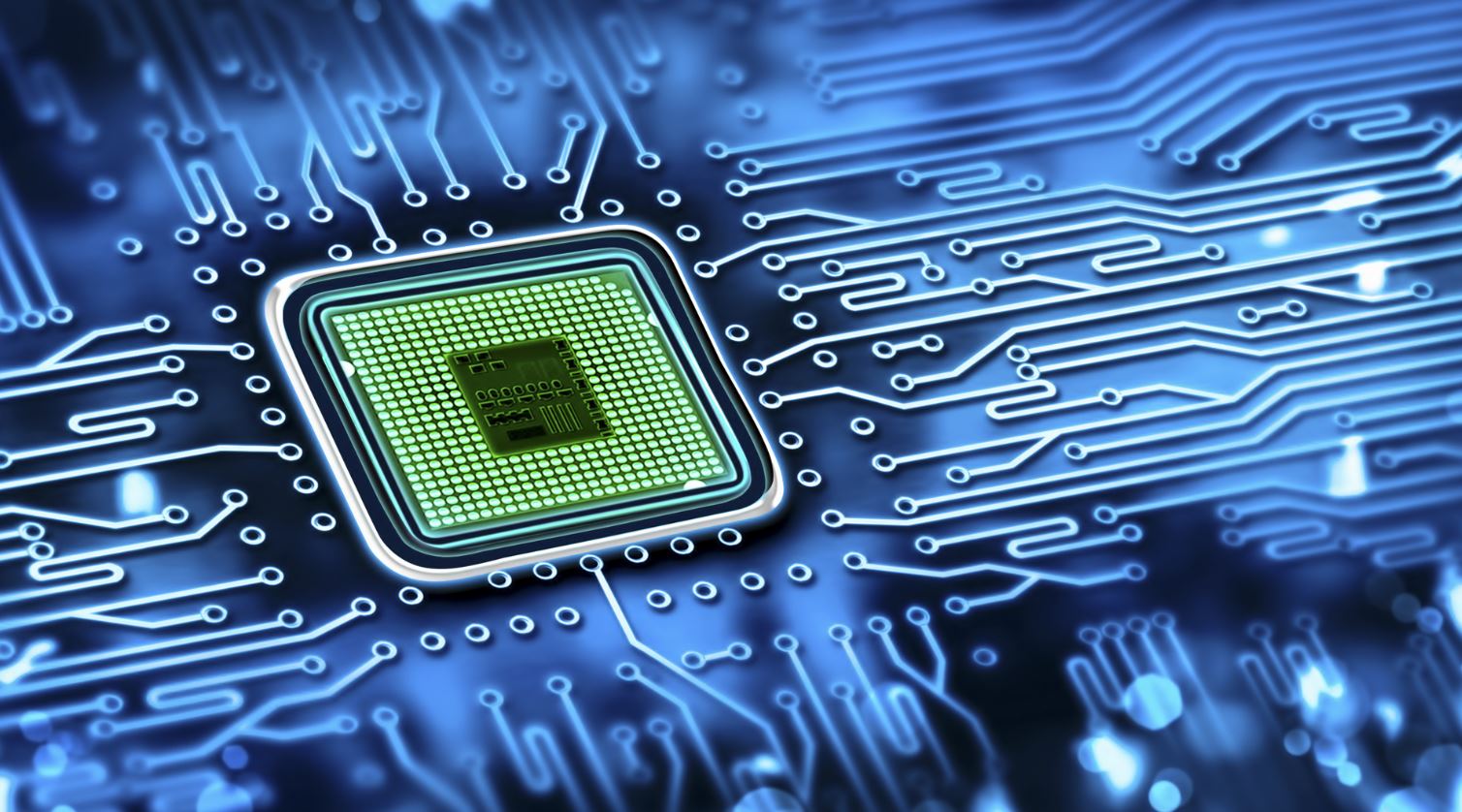Introduction
Welcome to the world of IoT, where the physical and digital realms merge to create a connected ecosystem that transforms the way we live and work. Internet of Things, or IoT, is a concept that has gained significant attention in recent years, revolutionizing industries and enabling unprecedented levels of automation, efficiency, and convenience.
At its core, IoT refers to the network of interconnected devices that can collect, exchange, and analyze data. These devices can range from everyday objects such as household appliances and wearable devices to more complex systems like smart cities and industrial machinery. The underlying principle is to enable communication between devices, sensors, and software applications to gather and process data in real time.
IoT has been made possible by advancements in technology such as sensor miniaturization, wireless communication, and cloud computing. With billions of devices already connected and billions more to come, IoT has the potential to transform various aspects of our lives, from our homes and cities to industries and healthcare.
One of the key features of IoT is its ability to automate and optimize processes, making them more efficient and cost-effective. For example, in a smart home, IoT-enabled devices can automatically adjust the temperature, control the lighting, and even order groceries when supplies are running low. In industries, IoT devices can monitor equipment performance, detect anomalies, and schedule predictive maintenance, thus reducing downtime and improving productivity.
Furthermore, IoT has the power to enhance our quality of life and improve safety. For instance, wearable fitness trackers can monitor our health metrics and provide personalized insights to help us reach our fitness goals. In smart cities, IoT enables real-time monitoring of traffic, energy consumption, and waste management, leading to more sustainable and livable urban environments.
However, along with these benefits, IoT brings its own set of challenges. The massive amount of data generated by IoT devices requires robust and secure infrastructure to handle and analyze it effectively. Privacy and security concerns also arise, as the interconnected nature of IoT devices opens up potential vulnerabilities that can be exploited by malicious actors.
In this article, we will delve into the intricacies of IoT, exploring its definition, functionality, and various applications. We will also discuss the benefits and challenges associated with IoT implementation, as well as the security and privacy considerations that need to be addressed. Lastly, we will glimpse into the future of IoT and its potential to shape our world in the coming years.
What is IoT?
The Internet of Things (IoT) refers to the interconnection of devices, sensors, and software applications through the internet, enabling them to collect and exchange data. In simple terms, it is a vast network of physical objects embedded with electronics, software, and connectivity capabilities that allow them to communicate and interact with each other autonomously.
The concept of IoT revolves around the idea of creating a dynamic ecosystem where everyday objects are connected and can be accessed remotely. These objects, often referred to as “smart” or “connected” devices, can range from smartphones, tablets, and wearable devices to household appliances, vehicles, and industrial machinery.
To facilitate communication and data exchange, IoT devices are equipped with various sensors, processors, and networking capabilities such as Wi-Fi, Bluetooth, or cellular connectivity. These sensors gather data from the environment, such as temperature, light, motion, and transmit it to the cloud or other connected devices for processing and analysis.
The beauty of IoT lies in its ability to enable automation, remote control, and intelligent decision-making. For example, a smart thermostat in a connected home can learn the occupants’ preferences and automatically adjust the temperature settings accordingly, ensuring optimal comfort and energy efficiency.
IoT has also extended its reach to industrial applications, giving rise to the concept of Industrial IoT (IIoT). In industries such as manufacturing, transportation, and agriculture, IoT devices are used to monitor equipment performance, track inventory, optimize supply chains, and improve overall operational efficiency.
The implementation of IoT has brought forth a myriad of benefits across various sectors. By enabling real-time data collection and analysis, IoT devices can provide valuable insights into consumer behavior, market trends, and operational efficiency. This data-driven approach allows businesses to make informed decisions, identify areas for improvement, and deliver personalized experiences to their customers.
Furthermore, IoT has the potential to enhance our daily lives, making our homes smarter and more convenient. With IoT-enabled devices, we can remotely control and monitor household appliances, security systems, and even receive notifications when our groceries are running low. This level of connectivity and automation saves time, reduces energy consumption, and increases overall productivity.
As IoT continues to evolve, its impact on various industries is expected to grow exponentially. From healthcare and agriculture to transportation and energy management, IoT has the potential to revolutionize how we live, work, and interact with the world around us.
How does IoT work?
IoT is a complex network that involves multiple components working together seamlessly to enable connectivity and data exchange. The key elements involved in making IoT work include:
- Devices and Sensors: IoT devices, also known as “smart” devices, are equipped with various sensors that can collect data from their surroundings. These sensors can measure factors like temperature, humidity, motion, and even location. The collected data is then sent to the next component in the IoT ecosystem for processing.
- Connectivity: IoT devices need a reliable and secure way to transfer the collected data. This is achieved through various connectivity options such as Wi-Fi, Bluetooth, cellular networks, satellite, or Low-Power Wide-Area Networks (LPWAN). The choice of connectivity depends on factors like range, power consumption, and bandwidth requirements.
- Network Infrastructure: The data collected by IoT devices needs to be transmitted to the cloud or other devices for analysis and processing. This requires a robust network infrastructure that can handle the massive amounts of data generated by IoT devices. Cloud computing and edge computing play a vital role in providing the necessary infrastructure for data storage, processing, and analysis.
- Data Processing and Analytics: Once the data reaches the cloud or edge computing platform, it undergoes processing and analysis. This involves extracting meaningful insights, identifying patterns, and making predictions using advanced analytics techniques. The processed data can then be used to trigger actions or provide valuable information for decision-making.
- User Interface and Applications: The insights derived from IoT data are made accessible to users through user interfaces and applications. These interfaces can be web-based dashboards, mobile apps, or even voice-controlled assistants. Users can monitor and control IoT devices, receive real-time notifications, and access relevant data through these interfaces.
The functioning of IoT revolves around the exchange of data between devices, analysis of that data, and taking appropriate actions based on the insights gained. For example, in a smart home, a motion sensor detects movement, sends the data to the cloud or a local hub, which then triggers actions like turning on lights or adjusting the thermostat.
It’s important to note that IoT is not limited to a single device-to-device connection. The power of IoT lies in the vast network of interconnected devices that can communicate and collaborate with each other. This network can be as small as a local area network within a home or as vast as a city-wide network of devices.
Overall, the functioning of IoT involves a combination of hardware, connectivity, infrastructure, data management, and user interfaces. This intricate network allows for seamless connectivity, data exchange, and intelligent decision-making, creating an ecosystem that brings increased automation, efficiency, and convenience to our daily lives and industries.
Examples of IoT Devices
IoT has permeated various aspects of our lives, revolutionizing the way we interact with everyday objects. Here are some examples of IoT devices that demonstrate the diverse applications of this technology:
- Smart Home Devices: IoT has transformed our homes into smart environments, making our daily lives more convenient and energy-efficient. Smart thermostats, such as Nest, can learn our temperature preferences and adjust the HVAC system accordingly. Smart lighting systems, like Philips Hue, allow us to control the lighting intensity and color using our smartphones or voice commands. Smart security systems enable remote monitoring and control of cameras, door locks, and motion sensors.
- Wearable Devices: The rise of wearable technology has brought about IoT-enabled devices that track our health and fitness. Smartwatches, like Apple Watch, can monitor heart rate, sleep patterns, and physical activity. Fitness trackers, such as Fitbit, can provide insights into steps taken, calories burned, and sleep quality. These devices often sync with smartphones or cloud platforms, allowing users to track their progress and set goals.
- Connected Cars: Modern automobiles have become increasingly connected, offering a wide range of IoT features. Connected cars can provide real-time navigation, traffic updates, and weather information. They can also gather data about engine performance, fuel consumption, and maintenance needs. Some cars even support integration with voice assistants like Amazon Alexa or Google Assistant for hands-free control.
- Industrial and Agricultural Devices: IoT devices play a crucial role in industries and agriculture, optimizing processes and increasing productivity. Industrial IoT (IIoT) devices monitor equipment performance, track inventory, and enable predictive maintenance. Connected sensors in agriculture can measure soil moisture, temperature, and humidity, allowing farmers to optimize irrigation and increase crop yields.
- Healthcare Devices: IoT has revolutionized the healthcare industry, improving patient care and remote monitoring. IoT-enabled medical devices, such as smart insulin pumps or continuous glucose monitoring systems, help individuals manage chronic conditions. Remote patient monitoring devices allow healthcare providers to remotely track vital signs, detect anomalies, and provide timely interventions. IoT devices also play a crucial role in telemedicine, enabling remote consultations between doctors and patients.
These examples are just the tip of the iceberg when it comes to the applications of IoT devices. From smart cities and energy management to retail and supply chain optimization, IoT has the potential to transform numerous industries and enhance our daily lives in ways we couldn’t have imagined before.
Benefits of IoT
The rapid growth of the Internet of Things (IoT) has brought about numerous benefits across various domains. Here are some key advantages of embracing IoT technology:
- Automation and Efficiency: IoT enables automation of processes, eliminating the need for manual intervention and reducing human error. This automation leads to increased efficiency, productivity, and cost savings. For example, in manufacturing, IoT devices can optimize production lines, monitor equipment performance, and facilitate predictive maintenance, resulting in improved productivity and reduced downtime.
- Data-Driven Decision Making: IoT devices generate a vast amount of data that can be analyzed to extract meaningful insights. This data-driven approach empowers businesses to make informed decisions, identify trends, and gain a competitive edge. For example, retailers can leverage IoT data to understand customer behavior, improve inventory management, and deliver personalized shopping experiences.
- Improved Quality of Life: IoT devices enhance our daily lives by making our environments smarter and more convenient. From smart homes that automatically adjust lighting and temperature to wearable devices that track our fitness and health, IoT improves our overall well-being and lifestyle. Additionally, IoT-enabled healthcare devices enable remote monitoring, allowing patients to receive timely care and reducing hospital visits.
- Enhanced Safety and Security: IoT has the potential to improve safety in various contexts. Connected surveillance systems with video analytics can detect and alert security personnel about potential threats in real time. IoT devices can also provide early warnings in critical situations, such as fire or gas leaks, enabling prompt action and minimizing damage. Moreover, IoT-enabled tracking systems enhance security and traceability in supply chains, reducing the risk of theft and counterfeit products.
- Optimized Resource Management: IoT offers significant advantages in resource management, leading to sustainability and cost reductions. In agriculture, smart irrigation systems can analyze weather data and soil moisture levels to optimize water usage and reduce waste. In smart cities, IoT enables efficient use of energy by monitoring and controlling street lighting, building systems, and utility grids based on real-time demand.
- Improved Customer Experience: By leveraging IoT data, businesses can gain valuable insights into customer preferences and behavior. This knowledge allows them to deliver personalized products and services, enhancing the overall customer experience and loyalty. IoT-enabled devices also facilitate seamless customer interactions, making it easier for customers to connect with businesses and access support.
These are just a few of the many benefits that IoT brings to individuals, businesses, and society. As IoT continues to evolve and expand, we can expect even more innovative solutions and transformation in various sectors, ultimately improving our lives in numerous ways.
Challenges of IoT
While the Internet of Things (IoT) has brought about numerous benefits, it also presents several challenges that need to be addressed for widespread adoption and success. Here are some key challenges associated with IoT:
- Security and Privacy: IoT devices are vulnerable to security breaches, posing significant risks to data privacy and personal safety. With the increasing number of connected devices, the attack surface for hackers expands, making it crucial to implement robust security measures. Encryption, authentication, and regular updates are key aspects of securing IoT devices and networks. Additionally, the collection and usage of personal data by IoT devices raise concerns about privacy and data ownership, calling for clear regulations and policies.
- Interoperability and Standardization: With a wide range of devices, protocols, and technologies in the IoT ecosystem, achieving seamless interoperability can be challenging. The lack of standardized communication protocols and data formats hinders the integration and collaboration of different IoT systems. Efforts to establish universal standards and protocols are essential to unlock the full potential of IoT and enable devices from different manufacturers to work together effortlessly.
- Scalability and Network Infrastructure: As the number of IoT devices continues to grow exponentially, scaling the network infrastructure to handle the increased data traffic and connectivity requirements becomes crucial. Adequate bandwidth, low latency, and reliable connectivity are essential for the smooth operation of IoT devices and applications. Building a robust network infrastructure that can support the massive volume of data generated by IoT devices is a significant challenge that needs to be addressed.
- Data Management and Analytics: With the influx of data from IoT devices, managing and extracting insights from the massive datasets become a complex task. IoT requires advanced analytics tools and algorithms to process and derive meaningful insights from the data. Moreover, organizations need to establish effective data governance policies to ensure data quality, privacy, and compliance with regulatory requirements.
- Power and Energy Efficiency: Many IoT devices are constrained by limited power sources and battery life, making power management and energy efficiency crucial considerations. Energy-efficient designs and low-power networking technologies are required to extend the battery life of IoT devices and minimize the need for frequent replacements or recharging.
- Ethical and Social Implications: The pervasive nature of IoT raises ethical concerns regarding the collection, storage, and use of personal data. Questions related to data transparency, consent, and the ethical use of IoT technologies need to be carefully addressed. Additionally, the impact of IoT on job displacement, surveillance, and socioeconomic disparities should be considered to ensure responsible and equitable deployment of IoT solutions.
Addressing these challenges requires collaboration between stakeholders from various sectors, including technology providers, policymakers, and industry experts. By working together, we can overcome these obstacles and fully harness the potential of IoT while ensuring the security, privacy, and ethical implications are carefully managed.
Security and Privacy Concerns
As the Internet of Things (IoT) expands, security and privacy become major concerns that need to be addressed. The interconnected nature of IoT devices brings about vulnerabilities that can be exploited by malicious actors. Here are some key security and privacy concerns associated with IoT:
- Data Breaches: With the vast amount of data generated by IoT devices, data breaches pose a significant risk. Unauthorized access to sensitive information, such as personal data, financial details, or even intellectual property, can have severe consequences. Data breaches can occur due to inadequate encryption, weak passwords, or insecure network connections.
- Device Vulnerabilities: IoT devices often have limited computing power and resources, making them susceptible to security vulnerabilities. Due to various constraints, such as the need for low-cost production or rapid deployment, some IoT devices may lack the necessary security controls or firmware updates to address vulnerabilities effectively. This makes them attractive targets for cyber attackers.
- Privacy Concerns: IoT devices gather a vast amount of personal data, including location, behavioral patterns, and even health information. The collection, storage, and use of this data raise significant privacy concerns. Users need assurance that their data is being handled securely, with explicit consent and transparency about how the data is being utilized.
- Insecure Communication: Information exchanged between IoT devices, networks, and cloud platforms must be secure to protect against eavesdropping and unauthorized access. Weak or insecure communication protocols can expose data to interception or tampering, compromising the integrity and confidentiality of IoT systems.
- Insufficient User Awareness and Education: Many users may be unaware of the security risks associated with IoT devices or may not have the necessary knowledge to secure their devices effectively. This lack of awareness can lead to poor security practices, such as using weak passwords or not updating device firmware regularly. Education and awareness initiatives are crucial to empower users to take appropriate security measures.
- Regulatory and Compliance Challenges: The rapid growth of IoT has outpaced the development of regulations and standards. As a result, it can be challenging to ensure compliance with privacy and security requirements across different jurisdictions. Establishing comprehensive regulatory frameworks and industry standards is essential to safeguarding IoT systems and protecting user privacy.
To address these security and privacy concerns, a multi-faceted approach is necessary. This approach includes implementing strong authentication and encryption mechanisms, regular security updates and patches, and comprehensive privacy policies. Additionally, collaboration between manufacturers, service providers, policymakers, and users is vital to establishing best practices for ensuring the security and privacy of IoT systems.
By addressing these concerns head-on, we can mitigate the risks associated with IoT and build a secure and trusted ecosystem that protects user privacy while enabling the full potential of IoT technology.
The Future of IoT
The future of the Internet of Things (IoT) is incredibly promising, with advancements and innovations that are set to transform various industries and aspects of our lives. Here are some key trends and possibilities that we can expect to see in the future of IoT:
- Massive Growth: The number of IoT devices is projected to continue its exponential growth. As technology becomes more cost-effective and accessible, more everyday objects will become connected, further expanding the IoT ecosystem. This growth will fuel new applications and use cases, ultimately shaping a hyperconnected world.
- Edge Computing: With the massive amounts of data generated by IoT devices, there will be a shift towards decentralized computing at the network edge. Edge computing reduces latency, enables real-time processing, and reduces bandwidth requirements by moving data processing closer to the source. This trend will decrease reliance on cloud computing and enhance the efficiency and responsiveness of IoT systems.
- Artificial Intelligence and Machine Learning: The integration of AI and machine learning into IoT systems will unlock powerful capabilities. AI algorithms will help analyze and make sense of the vast amounts of data generated by IoT devices, enabling predictive and prescriptive analytics. This will lead to smarter decision-making, automation, and improved user experiences.
- 5G Connectivity: The rollout of 5G networks will revolutionize IoT by providing faster and more reliable connectivity. 5G offers lower latency and increased bandwidth, enabling more devices to be connected simultaneously. This enhanced connectivity will unlock new possibilities such as autonomous vehicles, smart cities, and real-time remote surgeries.
- Industry-Specific Solutions: IoT will continue to evolve with industry-specific solutions tailored to address specific needs and challenges. From healthcare and agriculture to manufacturing and energy, IoT will drive advancements in these sectors, optimizing processes, improving efficiency, and transforming business models.
- Smart Cities: IoT will play a significant role in the development of smart cities, where interconnected devices and systems create more sustainable and livable urban environments. IoT will enable efficient energy management, traffic optimization, waste management, and enhanced public safety. Smart cities will prioritize sustainability, resource management, and quality of life for residents.
- Ethical and Responsible IoT: As IoT becomes more pervasive, ethical considerations and responsible deployment of technology will gain importance. Stakeholders will focus on addressing privacy concerns, data ownership, and social implications. Regulations and guidelines will be developed to ensure the ethical use of IoT, safeguarding individuals’ rights and fostering trust in IoT solutions.
The future of IoT holds immense potential to revolutionize industries, enhance our daily lives, and address global challenges. However, realizing this potential requires addressing security, privacy, and interoperability issues, as well as fostering collaboration between different stakeholders. As these challenges are overcome, IoT will continue to reshape our world and create new opportunities for innovation and growth.
Conclusion
The Internet of Things (IoT) has the power to transform the way we live, work, and interact with the world around us. By connecting devices, sensors, and software applications, IoT creates an ecosystem that enables automation, efficiency, and convenience.
IoT has already made significant strides, with smart homes, wearable devices, connected cars, and industrial IoT revolutionizing various industries. We have witnessed the benefits of IoT in terms of automation, data-driven decision-making, improved quality of life, and optimized resource management.
However, alongside these benefits, IoT also presents challenges that must be addressed to ensure a secure and ethical implementation. Security and privacy concerns, interoperability issues, scalability, and regulatory compliance pose significant obstacles that must be overcome through collaboration and innovation.
Looking ahead, the future of IoT is filled with promise. Edge computing, artificial intelligence, the widespread adoption of 5G networks, and industry-specific solutions will shape the next phase of IoT innovation. Smart cities will emerge, driven by interconnected devices and sustainable resource management. Ethical considerations and responsible deployment of IoT will be at the forefront of discussions, ensuring the protection of data privacy and fostering trust in IoT solutions.
In conclusion, the Internet of Things (IoT) has the potential to redefine how we live and work, empowering us to create smart and connected environments that enhance our lives and transform industries. While there are challenges to overcome, the benefits and possibilities offered by IoT are truly exciting. By embracing IoT technology responsibly and addressing its associated concerns, we can pave the way for a future where IoT drives innovation, efficiency, and a more sustainable world.







